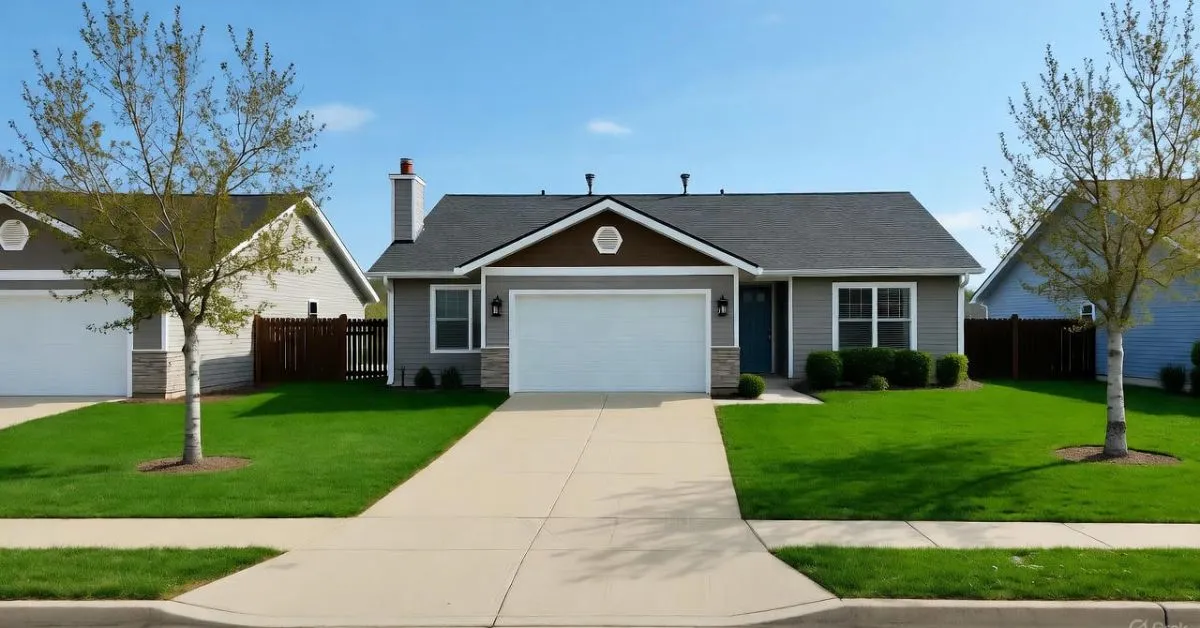Property
A Home Price in California? A 2025 Guide

Buying a home in California or searching for a home price in California feels like chasing a dream in 2025, doesn’t it? Prices seem sky-high, but don’t let that scare you off. Let’s walk through what’s happening with home costs, why they’re like this, and where you might find a deal. Think of me as your friend, breaking it all down over coffee.
Key Takeaways
- California’s median home price is $888,740 in October 2025, up a bit from last month, showing homes are still in demand despite a tight supply.
- Coastal cities like San Francisco hit $1.5 million, but inland spots like Fresno dip below $400,000, giving budget-friendly options.
- Only 15-17% of households can afford a median home, needing over $200,000 in income with today’s high rates.
- More homes are on the market—about 4 months’ worth—giving buyers a bit more room to negotiate.
- Prices might climb to $905,000 by 2026, but no big drops are expected due to steady demand.
What’s the Deal with California Home Prices?
Right now, the typical home in California costs about $888,740—that’s the median, meaning half sell for more, half for less. It’s up 2.4% from last month, but the climb’s slowing compared to past years. Why so pricey? California’s got that magic mix of beaches, jobs, and sunshine.
Nationally, homes average $417,933, so California’s nearly double. If you’re eyeing a move here, you’re paying for the lifestyle. But let’s dig deeper to see what you’re really working with.
Breaking Down Median Prices
Single-family homes hit that $888,740 mark, but condos or townhomes can be cheaper, around $650,000 in some areas. Prices are up 1-2% from last year, a gentler rise than before.
Imagine you’re house hunting. The median’s your starting line—not the crazy high-end sales, but the middle ground to set your budget.
How Prices Got Here
Back in 2023, medians were closer to $750,000. A small dip happened early this year, but strong job markets in tech and entertainment pushed things back up. It’s like a seesaw—more buyers keep prices climbing.
Why Are Homes So Expensive?
Ever wonder what’s driving these numbers? It’s not just people wanting to live here. There’s a mix of not enough homes, high demand, and some tricky economic stuff at play.
California’s short 840,000 to 3.5 million homes, depending on who’s counting. That shortage means folks are competing for what’s out there, pushing up costs.
Too Few Homes, Too Many Buyers
There’s about 4 months’ worth of homes for sale now, better than last year’s tighter market. >That’s good news—you’ve got more choices. But it’s still a seller’s game, as 6 months is a balanced market.
Building new homes is slow. Rules and high costs hold things back. In places like San Jose, remote workers moving in add extra pressure.
Money and Rules at Work
Mortgage rates are sitting at 6.5-7%, making loans pricier—think $600 extra a month compared to low-rate days. Prop 13 keeps taxes low for longtime owners, so they don’t sell, shrinking options.
Insurance is another hurdle. In wildfire zones, premiums are spiking, scaring some buyers off. But if rates ease, more homes might pop up.
Where You Can Afford to Buy
California’s not one big market—it’s a patchwork. Coastal cities cost a fortune, but inland spots can be kinder to your wallet. Let’s map out where your money goes furthest.
Coastal Cities vs. Inland Gems
On the coast, San Mateo and Santa Clara hit $1.9 million, and San Francisco’s around $1.5 million. Those are for big earners. Inland, Kern County’s at $385,000, and Fresno’s $415,000.
Picture this: A family in Moreno Valley snags a home for $525,000, a steal compared to LA’s $1.05 million. Suburbs like these are hot for first-timers.
Spotlight on Key Cities
In Southern California, Los Angeles is at $1.05 million, while San Diego’s $947,000, fueled by biotech and military jobs. Up north, Sacramento’s around $550,000—a sweet spot for access and cost.
If you’re starting out, these cities offer a balance. You get decent schools and jobs without the coastal price tag.
Tackling Affordability Hurdles
Affordability’s the big roadblock. Only 15-17% of households can swing a median home. That’s tough, but don’t lose hope—there are ways to make it work.
You’d need about $237,000 in income to afford the median home, way above the state’s $96,000 average.
What It Takes to Buy
Monthly payments for a median home are over $5,900, covering mortgage, taxes, and insurance. That’s a lot for most folks.
Here’s a tip: Look into down payment assistance or FHA loans. Some even team up with family to split costs, like a couple in Fresno who co-bought to get in.
Renting or Buying?
Renting averages $2,800 a month, but buying builds wealth over time. In pricey areas, it takes 5-7 years to break even on buying vs. renting.
If you’re not ready, renting lets you save while keeping an eye on the market.
What’s Happening in the Market?
The market’s settling down in 2025. Sales are holding at about 264,000 homes, steady from last year. No big crash is coming, but things are shifting.
More homes are available, which helps you negotiate.
Today’s Trends
Sales are ticking up monthly, and homes take a bit longer to sell. That’s a win for buyers—less frenzy.
Areas like the Central Valley are seeing more listings, giving you breathing room.
What’s Next for 2025-2026?
Prices could hit $909,400 by late 2025 and $905,000 in 2026.
Demand stays strong, so don’t expect prices to tank anytime soon.
How California Stacks Up
Wondering if California’s worth it? Let’s compare it to other places to see the bigger picture.
Nationally, homes cost $417,933—half of California’s median. You’re paying for the vibe here.
California vs. the U.S.
The national gap comes from California’s tight supply and high demand. You get beaches and jobs, but it costs you.
Other States to Consider
Texas homes average $352,000—way cheaper, but jobs differ. New York’s coastal cities are pricey like California but have fewer supply issues.
If you want affordability, Texas is tempting. California’s for those chasing its unique perks.
Tips to Make Buying Work
Ready to take the plunge? Here’s how to navigate California’s market like a pro.
- Hunt in Affordable Spots: Try the Inland Empire or Central Valley for homes under $500,000.
- Plan Your Budget: Save for 2-3% closing costs and aim for 20% down to lower payments.
- Use Online Tools: Zillow’s calculators help you crunch numbers.
- Look for Help: First-timers in Fresno use grants to cut down payment costs.
Start by getting pre-approved to know your budget. It’s like setting your GPS before a road trip.
FAQs
What’s the average price of a house in California?
The median home price in California is $888,740 in October 2025, with averages around $761,839. Coastal areas like San Francisco top $1.5 million, while inland cities like Fresno offer homes under $400,000.
How much does it cost to buy a house in Los Angeles?
In Los Angeles, median home prices are about $1.05 million in 2025. You’ll need over $200,000 in income to afford payments around $6,000 a month with current rates.
Is California housing affordable in 2025?
It’s tough—only 15-17% of households can afford a median home. With prices at $888,740 and rates at 6.5-7%, you need $237,000 in income, far above the state’s $96,000 average.
What are affordable cities in California?
Fresno ($415,000), Bakersfield, Chico, Clovis, Eureka, Fontana, and Sacramento ($550,000) are budget-friendly compared to coastal cities, offering value for families or first-timers.
Will home prices drop in California in 2026?
Not likely—prices may reach $905,000 with 4.6% growth. More inventory helps, but strong demand keeps prices steady, with no major crash expected.
How do California prices compare to the U.S.?
California’s $888,740 median is over twice the U.S. $417,933, driven by demand and low supply. States like Texas ($352,000) are cheaper but lack California’s job diversity.
Take these tips, explore your options, and chat with a realtor to find the right home for you. California’s market is tough, but with the right plan, you can make it work!
